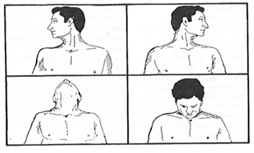Enlightening the Brahmamudra- As Per Yogmimansa in Management of Manyastambh w.s.r. to Cervical Spondylosis
DOI:
https://doi.org/10.47070/ayushdhara.v8i5.811Keywords:
Cervical spondylosis, Brahmamudra, Yoga, Manyastambh.Abstract
Cervical spondylosis (CS) is a degenerative and age-related condition affecting neck joints. It is also known as cervical osteoporosis. This is usually found in men and women at the age of 40 years or above.
The aim of present study to reduces the symptoms and increases in functional activities of elderly patients with spondylosis before and after Bramhamudra.(Yoga posture)
In this clinical study, total 30 patients were enrolled. All patients were treated on Brahmamudra fallowed by micro exercise and diet on the day of enrollment and after 30 day with the schedule as 0th 7th 15th 30th day fallow up. There is no drop out.
Clinical assessment done on day 1st and 30th day of fallow up, shows results of improvement in all the assessment criteria in neck region. Neck pain and the symptoms was assessed examination (X-ray, MRI) by symptomatic score used by VAS (Visual analog scale), physical examination through ROM (range of movement), cervical disability score questionnaire, radiological and examination by pathological test (uric acid, ESR, RA factor, BMD in the patient willing to do) on the day of enrollment. Then after fallow up the neck pain was examination by symptomatic score used by VAS, physical examination through ROM, cervical disability score questionnaire (radiological and examination by pathological test if required).
In conclusion, a combination of Yoga with diet control is found to be effective in reducing pain, and facilitating improvement in functional status of elderly people suffering from CS.
Downloads

Downloads
Published
Issue
Section
License
Copyright (c) 2021 AYUSHDHARA

This work is licensed under a Creative Commons Attribution-NonCommercial-ShareAlike 4.0 International License.


